In any emergency situation water is going to be at the top of your priority list. Without water, your survival chances are measured in days – and not many of them. It’s vital that you have access to a reliable supply of clean, safe water. How much? At a minimum, a gallon a day for everyone in your group for a period of at least two weeks. For a family of four that means 56 gallons of water, and that’s a bare minimum. When you have to use it for drinking, cooking and washing, a gallon of water isn’t a lot.
Stashing a few extra bottles of Highland Spring in the fridge obviously isn’t going to cover your water needs for long, so for real preparedness you need to lay in a good supply. That means selecting suitable containers, filling them with safe water and storing them in a cool, dark dry place. Do that properly and you’ll have a water reserve that will keep you in the game until you can find a safe source, whether that’s a well, a rainwater catchment system or something else. Unfortunately, there’s a lot of bad advice floating around when it comes to storing water.
Here are some of the common myths, and the facts behind them:
Myth #1 – “I don’t need water storage because I have access to a well/pond/river”
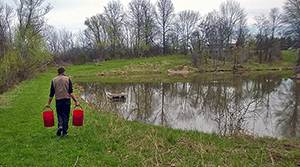 Some people believe that, because there’s a plentiful supply of water close by, they don’t need to keep an emergency stockpile. It’s easy to see the logic in this. After all, if you have a pond on your property with a few thousand gallons of water in it, what’s the point in stashing some barrels in the basement? If your regular water supply is from a well, you’re independent of the grid anyway and don’t need to take any extra precautions.
Some people believe that, because there’s a plentiful supply of water close by, they don’t need to keep an emergency stockpile. It’s easy to see the logic in this. After all, if you have a pond on your property with a few thousand gallons of water in it, what’s the point in stashing some barrels in the basement? If your regular water supply is from a well, you’re independent of the grid anyway and don’t need to take any extra precautions.
The logic is pretty clear – but it’s wrong. You don’t know what form an emergency will take. What if a nuclear power station has a containment failure and your pond gets lightly sprinkled with radioactive dust? You won’t want to go outside at all until the radiation level has fallen – which probably means a couple of weeks – and even if you could get at your water supply, it’s going to be contaminated. Fallout can be removed by filtering, but you end up with a radioactive filter. Your well? That could be contaminated by fracking, or even leached chemicals from an industrial accident.
In a SHTF scenario, rivers and ponds are going to be a magnet for less prepared people. You can’t safely rely on them in the short term. To be safe, you need to have a supply of water that you control access to and know was safe when it was stored.
Myth #2 – “A water tank or stash of barrels will leave me prepared for anything”
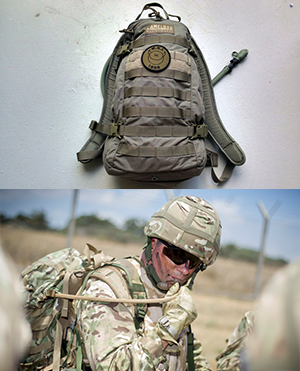 Storage tanks, barrels or five gallon containers are all great solutions for bulk water storage. If you want to have a few hundred gallons of safe water to hand, large containers are the way ahead. Many preppers believe this is all they need to keep them going until they can set up some way to collect safe water from a sustainable source.
Storage tanks, barrels or five gallon containers are all great solutions for bulk water storage. If you want to have a few hundred gallons of safe water to hand, large containers are the way ahead. Many preppers believe this is all they need to keep them going until they can set up some way to collect safe water from a sustainable source.
What if you have to move, though? You keep a bug-out bag, stocked with food, ammunition and medical supplies. Are you planning to take water, too? You need to be, because it’s just as essential when you’re on the move – but you can’t take a 55-gallon drum with you.
A couple of five gallon containers will do well if you’re leaving by vehicle, but the worst case scenario is you’ll have to bug out on foot. If that happens you’ll need water containers you can take with you. A Camelbak or similar hydration system is a great idea, especially if you’re moving on foot in hot weather. It isn’t enough though, so carry military water bottles as well – a couple of one-quart canteens will be a useful extra reserve.
Related: 10 Reasons Why You Do Not Want to Bug Out
Myth #3 – “Water will deteriorate in storage”
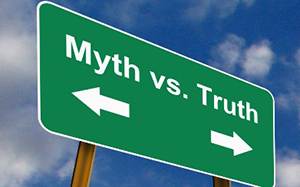 It’s a good idea to have a decent supply of water that’s kept fresh. For example you can have one or two five-gallon jerrycans that are emptied, rinsed and refilled every month. That gives you a few days’ supply that can be drunk straight out the container. There’s no need to worry about bulk storage, though. Water doesn’t deteriorate. It’s H20 and that’s that. You can store water for years and it will still be just as capable of hydrating you.
It’s a good idea to have a decent supply of water that’s kept fresh. For example you can have one or two five-gallon jerrycans that are emptied, rinsed and refilled every month. That gives you a few days’ supply that can be drunk straight out the container. There’s no need to worry about bulk storage, though. Water doesn’t deteriorate. It’s H20 and that’s that. You can store water for years and it will still be just as capable of hydrating you.
On the other hand, after long-term storage it might not be fit to drink straight away. Microorganisms can grow in it, especially if the containers weren’t sterile when you filled them. That doesn’t mean you need to throw it out though. It can be made safe by boiling, filtering or chemical purification, just like water from any other source. In The Lost Ways you can find a chapter detailing the procedure of sterilizing containers and storing water long term.
The advantage is that because you know it was safe when you stored it, there’s no risk of it being contaminated by chemicals, animal feces or any other hazard – you just need to kill anything that’s grown in it.
Related: This Might Be the Only Solution to Californian Drought
Myth #4 – “Water needs to be treated before storage”
There’s a common belief that water needs to be treated before it’s stored. This isn’t true at all. Tap water almost anywhere in the USA is perfectly safe, so there’s no point in doing anything when you fill the containers. After the filtering and purification it got at the water treatment plant, it’s clean enough for storage.
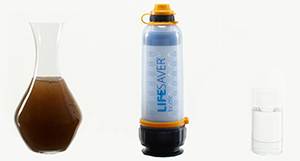 Also keep in mind that even if you purify the water before storing it, over a long period microorganisms can still grow in it. Chemical purifiers will last a while, but in the end they’ll evaporate. If water has been stored for months or years you should treat it before use, so why waste time and money treating it before storage? You’ll have to do it again later, anyway, so you might as well cut out the duplication and just do it when necessary.
Also keep in mind that even if you purify the water before storing it, over a long period microorganisms can still grow in it. Chemical purifiers will last a while, but in the end they’ll evaporate. If water has been stored for months or years you should treat it before use, so why waste time and money treating it before storage? You’ll have to do it again later, anyway, so you might as well cut out the duplication and just do it when necessary.
If water’s dirty or has a lot of growth in it, chemical purification isn’t really enough – you should filter it, too. If you get a high efficiency filter chemicals won’t even be needed. Something like a Lifesaver filter will remove microorganisms with over 99.99% efficiency, as well as clearing out any dirt, debris and suspended pollution. Again, though, do that before you use the water, not before you store it.
Myth #5 – “Water can be stored in any container”
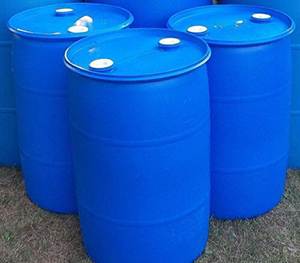 In a real emergency situation, any clean container can be used for short term water storage. For long term storage, however, you need to be a bit more selective. A lot of disposable plastic containers, like milk jugs, aren’t designed for long term use. Many of them are now biodegradable, so they’ll start to break down after a few months.
In a real emergency situation, any clean container can be used for short term water storage. For long term storage, however, you need to be a bit more selective. A lot of disposable plastic containers, like milk jugs, aren’t designed for long term use. Many of them are now biodegradable, so they’ll start to break down after a few months.
As they do that chemicals will dissolve into the water, and while they’re probably not going to poison you it makes sense to avoid them. Eventually these containers will start to leak, and you’ll lose your water. Disposable water or soda bottles are a bad idea, too. They’re clear, and let light through; light encourages microorganisms to grow.
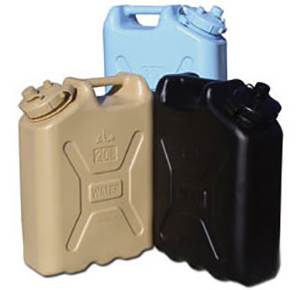 The ideal storage containers are plastic barrels molded from food-grade polyethylene. The normal color for water barrels is blue; this blocks most of the light, and what it does let through is in wavelengths that tend to slow down bacteria and algae instead of encouraging them.
The ideal storage containers are plastic barrels molded from food-grade polyethylene. The normal color for water barrels is blue; this blocks most of the light, and what it does let through is in wavelengths that tend to slow down bacteria and algae instead of encouraging them.
Military water containers are also good; these are totally opaque, so no light gets in at all. Picking solid, good quality food grade containers will help keep your water supply safe in the long term.
You may also like:
 Building The Three Bucket Bio-Water-Filter
Building The Three Bucket Bio-Water-Filter
This Bug Will Kill Most of the Americans during the Next Crisis (Video)

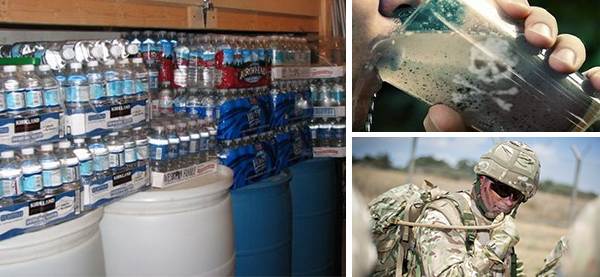













I love my red wine so I store my water in green glass gallon jugs in my basement, I also put tape around the cap also my water is distilled with a half teaspoon of Himilian pink salt
How do you “distill” water with salt?
This information is very helpful. I have read and heard many of these myths and didn’t know what to believe. I didn’t know that many plastics are biodegradable which would explain why my distilled water began leaking. Thank you for the information.
OMG, #3 absolutely SHOCKED me.
I discovered that gallon jugs filled with cheap wine are cheaper to buy than empty gallon jugs. A local discount chain sells cheap wine at $7 a gallon. Empty gallon jugs when I can find them are $12 each. So even if I don’t drink the wine and pour it down the drain I save myself $5.
Sorry to tell you Ezsal, but adding salt to your jugs of water does not distill it. Distillation is a heat driven process that changes water into vapor which is then condensed back into liquid form. The distillation process has to be carefully controlled in order to avoid contamination. Adding salt no matter where the salt is from does nothing to either purify or distill the water. It just adds salt. If there is organic matter in the salt it may in fact, contaminate your water over a period of time.
Public entity water (water companies, city water) is supposed to meet minimum federal standards. If you review those standards, they are quite minimum. The water supplied to your home is intended to be used immediately and not stored. The chemicals used in treating the water have a shelf life and water stored for survival purposes most generally far exceeds that shelf life. If I were storing water supplied by a city or water company, I would treat it as outlined in various articles or I would boil it before using it as recommended above. That is what I plan to do with my stored water. I have wrapped my glass wine jugs with self-stick, cork shelf liner in order to protect against breakage.
Some people don’t know that the water heater tank will have 30 to 50 gallons in it and they don’t know how to go about getting it. you need to look at your water tank. they all have a valve at the bottom, but you will need a short hose to get it out without wasting any of it. that can come from your washer if you don’t have a short hose just for that pourpose. you also may need a pair of water pump pliers to disconect it from your washer. The hot water hose will be the cleanest one. Have someone walk you through getting your water out if you don’t know.
And in a SHTF situation those folks who switched to an instant hot water heater are going to be out of luck as far as stored water is concerned. Don’t be sucked in by the “save energy” cant that peddles the instant hot water heaters. If you have to change out your hot water heater get the old fashioned kind and if you have room for a 50 gallon tank, get it. Yeah, it will cost more but it won’t cost nearly as much as buying a 50 gallon water storage barrel. I just replaced my hot water heater and if I had room for the 50 gallon one, I would have gotten it rather than the 40 gallon. It was only $27 more than the 40. Unfortunately, I just couldn’t shoehorn the 50 gallon tank in the available space.
Thet is why when we got our Tankless water heater I had then plumb it in after the 40-gallon water heater that had been reset to vacation temp. The Plumber gave me grief over that but I just said that the power was off for a week last year and he said OK. Now if I could get the electric from an inline water turbine generator would be great. Then I would just need a gas supply for hot water.
I always tell folks the same thing, chuck. In the case of folks that already trashed their water tanks, I mention that the could easily place a 55 gal. drum where the tank used to be. place on blocks to give it enough height to fill smaller containers without a pump.
I usually get a smile and a nod. Go figure, lol
Left Coast Chuck: All this talk about water heaters reminded me of an idea I read about a few years ago about converting an old, non working water heater into a “safe” place to store valuables and firearms. They talked about running pipes and wires to it like its real. The best I can remember, they fixed the top so it could be removed. You ever heard of anything like that?
Haaa … Damn best idea ive ever heard
Another thought is a storage tank that folks on a private well are all too familiar with. These Tanks can be installed in line ahead of a water heater and provide many gallons of fresh water, as it’s constantly being replaced from your source water supply.
I would also suggest a “working” main supply valve ( prefer a ball type) to keep water from back flowing from your house to its source. Or a check valve would be an option too.
Are you really expecting such a crisis? And even if it does happen, how do we keep a group of people from breaking in and stealing our stored food and water,short of killing all of them? This whole SURVIVAL business is beginning to worry me! We did get the book “Lost Ways”, however.
Nance, you expressed fear of a group of people breaking in and stealing your stuff… what to do short of killing them? Let me be very bleak hear; if SHTF, you either protect your food, water, and family or they will kill you and your family and then take your stuff. Get plenty of ammo, learn how to handle your firearms safely and get a mind set that if they invade your home, they need to “go away”. You did see the Wal-Mart tape on TV a few years ago where a guard was trampled to death for a toy? What do you think people will do when they are starving and dying of thirst? Remember an EMP is a stark reality. Please prepare and get a plan with all your relatives involved. Good Luck
Nance: The mindset to protect what you have had the foresight to acquire takes some work to acquire. Some folks feel that they can never take another’s life, that it is better to die oneself than to take another’s life. That is a philosophical question that must be resolved individually. What I decide to do should only be noted for information purposes. It shouldn’t influence the decision you and your family have to make for yourselves. While I can’t say that all people who have been attacked have decided that if there is a next time they will defend themselves with all means available, from reports I have read, even dedicated pacifists have opted to arm themselves after being attacked and assaulted. It is quite revealing how many anti-gun folks either own guns themselves or suddenly decide that having a gun is a necessity after they have been robbed or assaulted.
There is the old joke about the Quaker who discovered a burglar in his bedroom. The old Quaker said to the burglar, “Friend, I would not harm thee for all the world but thou standist where I am about to shoot.”
My apologies to Friends everywhere.
If you and your family decide to protect what you have prudently put aside, then Dan’s advice is worth noting. Acquire appropriate firearms, acquire adequate cartridges for the firearms and learn how to use them. Form the mental resolve to use them when needed. Do not count on exhibiting a firearm to “scare away” a marauder. Ask your local police force how many officers have been threatened with having their firearm inserted in a body orifice. I would suggest that all of them have multiple times. Almost every week one can read a news story where criminals have attempted to seize the officer’s weapon. The old adage of, “All you have to do is rack the slide of a shotgun to scare off criminals” is an urban fairy tale. If you have to rack the slide, you have to shoot. You have to resolve that the shock of being shot will have to scare off the marauder or the shock of seeing his buddy’s head explode with a shot.
Otherwise you and your family will have to cower inside your shelter, emitting no light after dark, eating all your food cold so that you don’t allow odors of cooking food to escape your shelter and otherwise staying hidden and frightened, hoping that no one decides to check out your home to see if there is anything worth taking.
Do you and your family want to survive in such circumstances or would you decide that it is better to not live in such bestial circumstances. Surprisingly I have had several relatives tell me that they would rather be dead than have to live in a soddy growing their own vegetables with no electricity or modern amenities. Whether that will be the case if push comes to shove or not remains to be seen. The will to survive is sometimes exceedingly strong and sometimes very fleeting. As any combat veteran can tell you, some men are mortally wounded and continue to carry the fight to the enemy and some men have a wound that should be survivable and yet give up and die when there was no reason to. What course you and your family will take is something that should be seriously discussed and then plan accordingly.
If your family decides it doesn’t want to live under such conditions, then I would suggest carbon monoxide. It is painless and simple and peaceful and you don’t have to spend a lot of money and effort preparing for a possible civilization shattering event.
left coast chuck,
I agree wholeheartedly with most of your post, however, I must take exception to your suicide advice!
I have it on good authority (my brother, who has attempted it five times & was brought back twice). He swears that everything he has tried (carbon monoxide, drowning, overdosing on pills, oleander leaf spaghetti sauce, everclear), was extremely painful. He does not think there is a painless way to kill yourself.
OH MY LORD!! HAHAHAHAHAHA
Give that old Quaker a big hug!!!
Nobody expects a crisis, some just prepare. A crisis is relative to the situation at hand. Nearly everyone can handle a thunderstorm that lasts all day, maybe even a few hours of power outage, but how many are ready for a winter ice storm that knocks out all power for a week? Good people get scared, feel helpless, then panic. The more severe the situation , the more severe the reaction. Look at large cities in the gulf or east that are hit by a hurricane. Even Good people panic. Being prepared is just that, keeping your family warm, fed, and safe. Not an Us-against-them game.
I just run into this old thread, and once again absolutely in agreement with LC Chuck. Nance, you’d do well to catch up on your reading and look at Ted Koppel’s recent book “Lights Out”. Also look in youtube at at Nat Geo’s “American Blackout” documentary, it’s about 1:20 min. but beautifully depicts a likely scenario. The progress to the books “Going Home” by A. American and “Patriots”. No doubt when the SHTF (and it’s not “if” but “when”) things will be a helluva lot different from what you see now. And if you think that only the grid being out is our only risk, it’s not. Do yourself and your family a big favor: get prepared for what’s coming. Peace.
I dread the idea of having to kill someone, I don’t even like hurting people either. But in a situation where my family and/or myself getting robbed of things vital to our survival and possibly gang raped, I don’t think I will have a choice. If a mob finds out you have food, they still might even swarm in after you unload all your loaded guns on them. One of FEMA’s jobs is to disarm people so they can’t protect themselves. If they see you have a stash of food and water, they might take that too. This IS scary but you need to stay calm so you can think straight.
If you don’t prepare and you don’t have a hidden stash, the looters won’t believe you and will kill you anyway. So not being prepared isn’t going to help you either. So it is better to be prepared and have the mindset to do what you have to. Not all weapons require ammo, and some are better because you don’t let the whole neighborhood know you just shot a gun. Think outside the box and be prepared to protect what you think is important to you. The government is not prepared to feed you! The government is not prepared to house you SAFELY! The government is not you friend or your salvation. Be safe and be smart. This site is just to get you thinking in the direction to save yourself and your family. You still have to go the extra mile and search for your own solution and put it into action. You are the only one that will care about you when anything goes sideways. Sorry, but I can’t and won’t help anyone once things get really bad. I can’t take that chance. I love my family too much to put their safety at risk.
If water does not go bad, then why do some sources say to place silver in your stored water to help keep it “good”?
How much silver should be used ? Is it per gallon or just some ( a silver coin ) in each container ?
Water doesn’t go “bad” in that it becomes some toxic substance such as canned food that develops botulism. Depending upon the circumstances under which it is stored, it can develop organisms that will make you sick and can kill you or at a minimum make you wish you would die.
Let me describe my water plan. I have water stored away for an emergency. I store it out of light but storing it in cardboard boxes that I make that are strong enough to support the weight of several boxes of water stack on top of each other. They also are dense enough that light doesn’t penetrate them. I buy distilled water and store it in bottles that I have sterilized with a bleach solution.
That is all the prep I do. The bottles will remain sealed and undisturbed until required. At that time I plan to boil all water that I am going to drink, brush my teeth with and wash my face. Water for rinsing dishes will also be boiling at the time they are rinsed. All other water will be used as is unless it obviously has something growing in it. I live near the ocean and I plan on using boiled sea water for washing clothes and perhaps even washing my body and for other purposes where water is needed but pure water is not necessary. I plan on boiling sea water for some period of time after an apocalyptic episode because all of our sewers drain to the ocean and the water will have incredible amounts of garbage and other junk in it and boiling will be absolutely necessary in order to kill potentially harmful organisms.
Why boiling as opposed to chemical treatment such as bleach or pool chlorine or silver dollars? Well, boiling is completely under my control. I can observe that the water has reached a roiling boil and control how long I boil it. With bleach, it loses its strength over time. Are ten drop enough or do I need twenty? As with silver, yes, it contains some antibiotic properties does it kill all the harmful organisms present in water? How much silver? Is one silver dollar enough or do I need two or five? The water reached a roiling boil and at that point I took it off the heat source. It will remain over 165 degrees for some period of time and I can be sure that everything harmful in the water has either been killed or has been vaporized. If I suspect that it has been seriously degraded by organo-phosphates or hydrocarbons, I can filter it through a water filter. However most organo-phosphates and hydrocarbons have a lower vapor point than water and so will be evaporated at a lower temperature than a roiling boil. The only exception is heavy metals and those can be filtered out by an activated carbon filter.
I plan on using stoves that utilize wood scraps as their fuel. You can even buy one that will use scraps of wood to create heat and charge your low amperage electronic devices if they survive the EOTW event. Wood is a renewable resource that is readily available even in an urban environment. With the appropriate stove you can heat significant quantities of water with modest amounts of wood. If you are careful to preserve hot coals before retiring at night, you won’t even need matches to start up again the next day. When the plains Indians were on the move the Fire Keeper was the most important person in the tribe. His job was to carry the hot coals from campsite to campsite and he was in the vanguard in any move so that by the time the whole tribe had arrive there would be a fire going from which individual families could start their own fires.
Kind of long winded but to sum it up. I wouldn’t rely on silver, no matter how vigorously it is touted as the solution to pure water. As far as I know there are no serious studies that have been done to ascertain just how efficacious it is and under what circumstances. It is an urban legend. I know, someone will respond that their Granny kept a silver dollar in their rain barrel and was never sick a day in her life. That is called anecdotal evidence and is not relied upon for science. Boiling is scientific. It is proven to work. It has been studied and the studies reported and scientifically validated.
Do you have an example of said stove that uses just wood scraps? I don’t have a ton of room in our house for a big wood burning stove so the idea of having a smaller one like the one you mentioned is very appealing to me.
http://www.bioliteenergy.com/
Check out this stove, burns anything efficiently and put out high BTUs.
https://www.amazon.com/gp/product/B005GQZ4O0/ref=oh_aui_detailpage_o08_s00?ie=UTF8&psc=1
Not “long winded” left coast chuck, very informative. Thank you for the great info.
I read an article where old time sailors(wooden ships)would put silver in barrels of water for long time storage.
” Your well? That could be contaminated by fracking…”
You should remove this silly statement.
Actually, wells are still being ruined in TN where we have so much underground – coal, oil, gas. Some of it is from old mining.
@Vlad: Are you a well expert? Are you renown for your expertise in analyzing well water? I am certainly no expert but growing up my folks lived in two houses that drew their water from wells. I know that they had their water analyzed periodically to determine if it still was good to drink. I have know a gentleman who lives where there is a lot of natural copper in ground. There was an earthquake well over 100 miles away but after the earthquake their well water had so much copper in it they had to put in a special filter to treat it. I don’t know the answer about fracking and like so many controversial topics, you can buy whatever opinion you want to prove whatever point of view you are espousing. Scientists and “experts” are for sale. Sad but true. If I lived in an area where there was fracking going on, I would certainly have my well water analyzed by a reputable company at least once a year and perhaps as frequently as every six months depending upon how close the fracking was and how active the oill extraction was. I don’t think it was a silly statement and unfortunately, your snide comment adds nothing to the otherwise serious discussion of a topic that is of vital interest to all, because water supply interruption occurs very frequently all across the country.
can anyone tell me if you can reuse the 4-5 gal. blue (office cooler) bottles?
@Terry: You will read articles that say that plastic (using it generically) gives off chemicals that will eventually turn us into gnomes or make all our hair fall out or give us 57 different kinds of cancer. Plastic is divided into groups and in the little triangle that appears on most food or beverage containers there is a number. Look up the meaning of the number. It identifies the kind of plastic that is in the container. You can go on line and find out what the number means and its relative safety for long term storage. As to whether you can use the blue office coolers, do you think the water company throws them away when they come in with full bottles and take out the empties? Of course not. They take them back to the plant, they go on the sterilizer (they probably use UV) they are filled, the cap is fastened on and they go back out on the truck for delivery back to your office or someone else’s. There are two kinds of plastic that you probably should avoid for long term water storage. Unfortunately, I am not bright enough to keep the numbers committed to memory, but they are the numbers used for plastics that have unknown or “other” contents. I would not use those for storage. The office coolers, unless your company is using some cut-rate el cheapo water supplier, I would think those bottles are safe to use for long term storage. Check the number in the triangle and look it up.
This link has the “numbers” for the Resid ID Codes for plastics. The biggest issue with plastics is light and heat. That is when most leaching occurs. Athough some plastics still show estrogenic activity which can disrupt hormone processes in the human body. Be cautious of your plastic containers in your daily life and for water storage. https://articles.mercola.com/sites/articles/archive/2013/04/11/plastic-use.aspx
Actually, I’ve read that you can store water in clear 2L bottles. When ready to consume, set them in the sun for at least 12 hours. The sun’s UV rays are a natural and chemical free disinfectant.
That is called the SODIS method of disinfecting. Look it up on line. There are some very specific requirements regarding the type of bottle and the size AND the amount of sunlight. This has been discussed on another posting on this website in more detail. It is used in sunbelt countries in Africa with success.
Thanks, Chuck! I was wrong about the time…but right about the method and use of clear #1 PETE bottles. The site doesn’t really specify the size of bottle, though.
“Clean drinking water in 6 hours
The SODIS method is ideal for treating water for drinking in developing countries. All it requires is sunlight and PET bottles. How does it work? Clear PET bottles are filled with the water and set out in the sun for 6 hours. The UV-A rays in sunlight kill germs such as viruses, bacteria and parasites (giardia and cryptosporidia). The method also works when air and water temperatures are low.
People can use the SODIS method to treat their drinking water themselves. The method is very simple and its application is safe. It is particularly suitable for treating relatively small quantities of drinking water.”
Boy, I just love a long winded government document… A document published by the World Health Organization, discusses the use of silver as a water purifier and disinfectant. It shows that silver, in some regards, may be effective at killing, or minimizing the presence of some bacteria, but is not an effective drinking water disinfectant.
There are many peer reviewed tests, and the science int the document is over my head. Silver (and copper) is still being tested for the treatment of water, but it sounds like just dropping a silver coin in water won’t solve a prepper’s water storage needs.
The PDF can be found at https://www.who.int/water_sanitation_health/dwg/chemicals/silver_water_disinfection-toxicity_2014V2.pdf if anyone is interested in reading it, and breaking down the conclusions in a manner this country boy can understand.
How not to store water for a long time: In gallon plastic milk jugs in a dirt-floored cold cellar. After a couple of years those thin-walled jugs allow the smell of the cold cellar to permeate the jugs. It may be safe to drink, but it’s really unpalatable. Like taking a bite of dirt, bleaah.
Unquestionably believe that which you said.
Your favorite justification appeared to be on the web the easiest thing to
be aware of. I say to you, I certainly get annoyed while people think about worries
that they plainly do not know about. You managed to hit the nail upon the top as well
as defined out the whole thing without having side
effect , people could take a signal. Will probably be back to get more.
Thanks
I agree that if you have a pond or a river around, you have a replenishable water supply. How do you make that dirty water safe and clean without gross tasting purifiers and bleach?
Thanks for the reminder that there are certain parameters to keep in mind when it comes to long-term water storage. I’d like to look for a bulk water delivery system soon because I’d like to be able to have potable water available for my family in case of an emergency. That is the first thing I would like to work on as I adopt a prepper lifestyle.
Liebespuppe